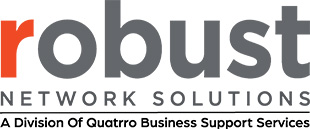Bill Gates said, “Measuring programming progress by lines of code is like measuring aircraft building progress by weight.” Similarly, measuring software development success by only launching the product is half of the equation. Unfortunately, many companies forget the ongoing support needed after an application has launched because the hype and excitement revolve around bringing it to market. But what happens after that? How do companies ensure that customers have amazing experiences months, years, and even decades after the initial launch?
That’s where ongoing application support comes in. Ongoing support and maintenance is actually the longest part of the development lifecycle. In this article, we’ll discuss:
- What exactly is application support?
- What are the different types?
- Who does the application support?
- What are the benefits?
What is Application Support?
To understand why it’s so important, it’s helpful to know exactly what application support is and is not. Application support means that the product is fully functioning for users, delivering on the promised experience. Application support can solve customer issues, ensure the product is running smoothly for internal stakeholders, and, overall, ensures that day-to-day operations are happening as needed. Services are typically divided between technical support and human support.
Technical support exists for digital assets like apps, software, websites, and more. As we mentioned before, bringing a product to market is only half of the equation; routine maintenance is needed to ensure major bugs don’t crop up with increased product usage and no systems begin to fail. No software is perfect, and it’s unrealistic to think you can ship a fully finished asset that will never need any more changes. Without ongoing technical support, bugs and issues can snowball into bigger problems that create poor user experiences, increasing churn and, ultimately, decreasing business revenue.
On the other hand, human support focuses on the actual users instead of the technology. While strong UI and UX assets will guide users into adopting and using your product, human touch helps fill the gaps where your software can’t. Especially if and when bugs crop up, an empathetic human support team helps reassure customers, win back their trust, and reduce churn.
Who Does Application Support?
It might not come as a major surprise that application support engineers perform application support. This unique role needs a confident grasp of technical skills to troubleshoot and fix the core product while also using soft skills like empathy and compassion to help customers who feel frustrated. While the day-to-day tasks may vary across organizations, you can typically expect an application support engineer to perform the following tasks.
- Problem assessment – They need to figure out exactly what’s wrong and gameplay how to fix it.
- Technology implementation – They’re responsible for deploying a wide variety of tools and software to help the business run.
- Troubleshooting – It’s no surprise that a big component of the role is fixing the routine problems that pop up in software systems.
- Cross-functional coordination – When problems arise or a new solution is deployed, they are responsible for interfacing across leadership, sales, customer success, and any other relevant departments with critical information.
- On-call assistance – Problems can arise at any time of day at any moment. Application support engineers are often on call for after-hour, weekend, and holiday problems.
- Record-keeping – Ongoing process documentation, regulatory compliance, and general updates are a big part of the application support engineer’s job. These reports could include bugs, issues, and outages, and leadership teams use this information to figure out how to budget accordingly.
What Will An Application Support Engineer Do?
Application support engineers but different organizations can do a wide variety of tasks, but when it comes to technical support, the list will probably look like this.
- First-level support
- Second-level support
- Third-level support
- Problem management and mitigation
- Information security
- Measurement and monitoring
- Continuous testing
- Help or service desk support
- Configuration management
- Launch support
- Capacity management
- Business continuity
Benefits of Application Support
Now that you understand what application support is, who does it, and what it might actually look like on a day-to-day basis, it’s important to understand the benefits. In 2021, the average organization used 110 software-as-a-service (SaaS) platforms, showcasing how mission-critical ongoing application support can be to a business.
Reduces probability of failure
With ever-changing requirements, applications need updates, and when these updates don’t happen, it can cause a mission-critical failure. Having eyes on your application continuously will keep it up-to-date and compliant with any changes.
Increased business continuity
Little bugs and issues can add up to big problems. Significant problems drive customers away, make products unusable for internal team members, and, overall, defeat the purpose of the application. When the application goes down, businesses lose revenue, and customers lose trust. This can only happen so many times before the application ultimately fails.
Improved user experiences
Digital transformation moves fast, and what is standard today might be outdated tomorrow. Continuous updates and monitoring make sure that users are getting the modern technologies they expect and not outdated versions.
Performance improvement
Outdated capabilities create lag, but the continual removal of these improves overall performance. Based on trending tools and technologies, engineers can remove code elements in the UI and UX that are slowing the platform down.
Robust Networks Provides High-Quality Application Support
Application support is a critical component of the software development lifecycle and shouldn’t be overlooked. Proper application support throughout the life of the product can generate more revenue and better customer experiences. With Robust Networks’ IT application support, businesses can get an expert partner to proactively support and maintain their most important assets, deliver high-quality experiences, and get the most out of their software. Contact us today.

